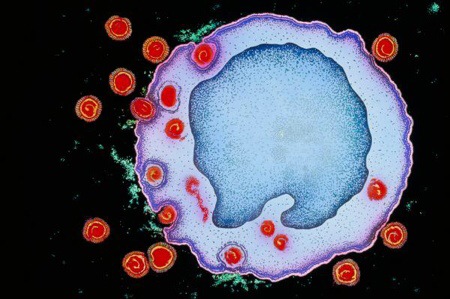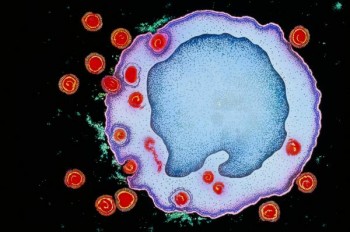HIV is sexist. A woman is twice as likely to catch the virus from an infected partner in a heterosexual relationship than a man is.
And homosexual men are at even greater risk. They’re more than 20 times as likely to get infected from an HIV-positive partner than partners in a heterosexual relationship.
Now scientists at Microsoft Research and the Zambia-Emory HIV Project have a clue about why these disparities exist.
Only the strongest, most evolutionary “fit” versions of the virus tend to infect a man when he has sex with an HIV-positive woman, scientist report Thursday in the journal Science.
In other words, only particular versions of the virus, with particular DNA sequences, are likely to pass from a woman to a man. This reduces the chance an infection occurs during sex.
The restriction is less when women have sex with an HIV-positive man. And, most likely, reduced even further when men have sex with men. So the chance of an infection increases in both situations.
As HIV replicates inside a person, mutations are introduced into its DNA. This results in a large number of different HIV versions swarming about the body — each with its own genetic code.
But when HIV is transmitted through sex, usually only a single version of the virus establishes a long-term infection. So the process is almost like a filter, letting only certain viruses through.
This made scientists wonder: Is there something special about the HIV versions making it through the filter?
To figure this out, a team at Microsoft Research and Emory University analyzed data from a decades-long study on HIV transmission between “discordant” heterosexual couples in Zambia. These are couples in which one person is HIV-positive and the other is HIV-negative.
During the study, the team gave the couples condoms and taught them other ways to prevent passing along HIV to their partner. But in 137 couples, transmission did occur sometime during the decade. In these cases, the team compared the viruses of the newly infected person with those of the partner.
They found that HIV was most likely to be transmitted when its genetic code had a particular pattern. These versions of the HIV genes seem to make the virus good at initially infecting and replicating within a person.
Turned out, this pattern is the average DNA sequence that scientists find when they examine HIV strains in people from around the globe. “The average sequence in the population is probably average because it works best, and we found that that is true,” says Jonathan Carlson, a computational biologist at Microsoft Research, who contributed to the study.
To establish a long-term infection through sexual contact, an HIV virus must first infect a single cell on the genitals. Then the virus multiples and spreads to adjacent cells. “Fitter” viruses are more efficient at infecting new cells and then replicating themselves, Carlson says.
And the higher the initial barrier to this initial infection, the fitter the virus has to be to complete this process.
Different parts of the body provide various levels of protection from the virus. The cells on the penis are tougher to infect than those in the vagina or anus. Trauma, such as open sores or ulcers in the genital area, can also increase the chance of infection.







